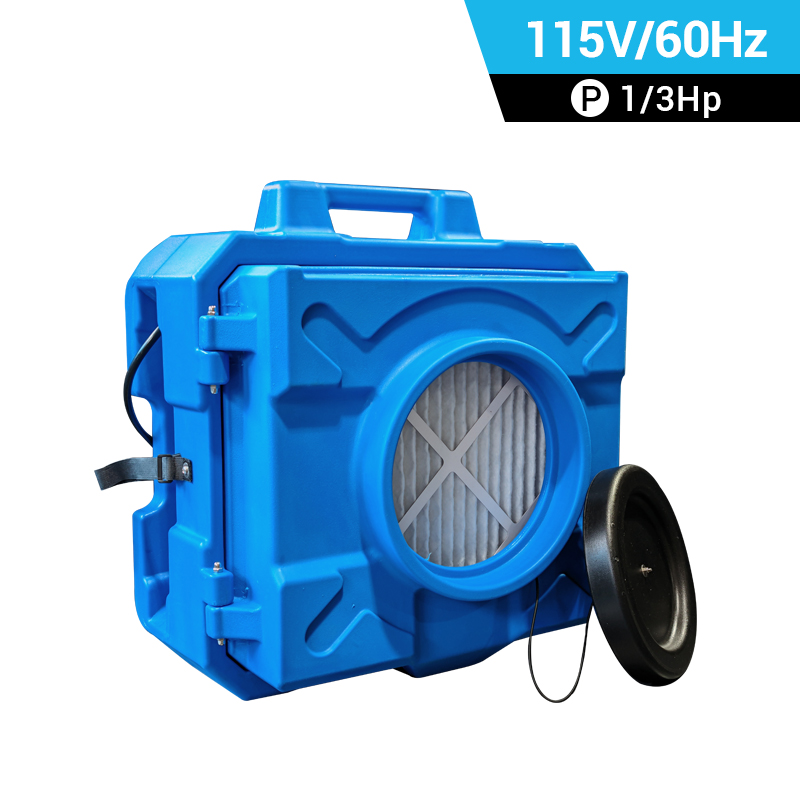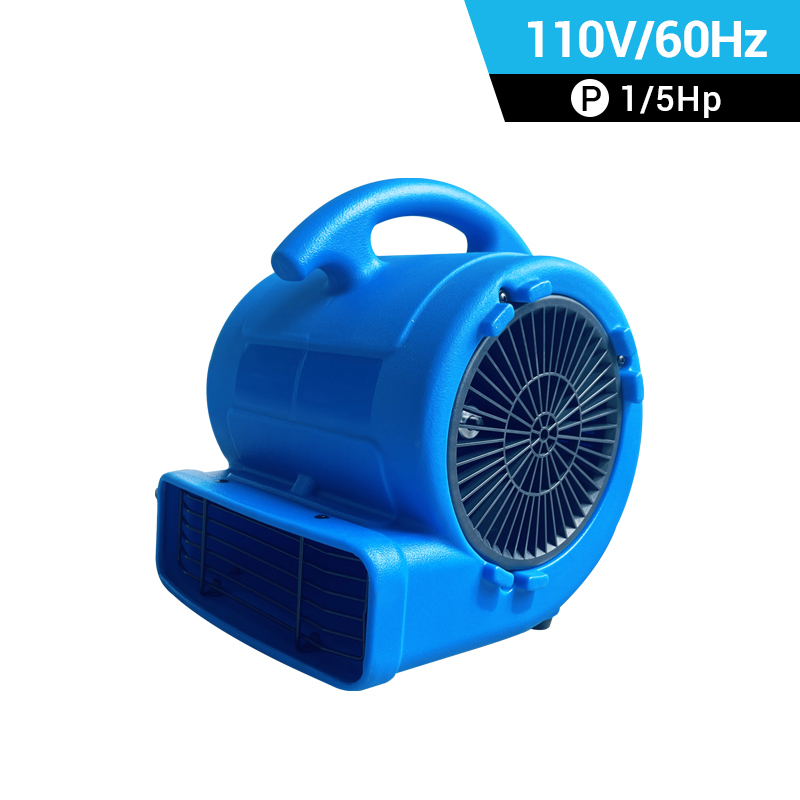What Is an Air Mover?
Air movers are equipped with powerful motors that generate a significant volume of air movement measured in cubic feet per minute (CFM). This airflow can be directed to specific areas or circulated throughout an entire room, effectively improving air quality, reducing humidity, and aiding in the drying process. The design of an air mover typically includes a fan assembly housed within a durable and lightweight casing. The casing may feature a low-profile design for easy portability and placement in confined spaces. Air movers are frequently utilized in construction sites to aid in drying freshly painted surfaces or to facilitate ventilation in confined areas. In commercial spaces, air movers are commonly used to enhance air circulation, cool down rooms, or remove stale odors. Additionally, air movers play a crucial role in water damage restoration projects by accelerating the drying process and preventing mold growth.
Why Choose Industrial Air Mover Fans for Water Damage Restoration?
1. High Airflow Capacity: Industrial air mover fans are designed to move a large volume of air quickly. This is essential for accelerating the evaporation of moisture from surfaces, carpets, and other materials affected by water damage.
2. Faster Drying Time: The high airflow capacity of industrial fans can significantly reduce the drying time after water damage. This is crucial in preventing further damage, such as mold growth, and in salvaging affected materials.
3. Versatility: Industrial air mover fans are versatile and can be used in various positions and angles to direct airflow where it's needed most. This flexibility allows for targeted drying in specific areas.
4. Drying in Tight Spaces: Industrial fans are often designed with compact and stackable designs, allowing them to fit into tight spaces or be easily transported to different locations within a restoration site.
5. Multiple Speed Settings: Many industrial fans have adjustable speed settings, allowing for precise control over airflow. This enables restorers to tailor the drying process to the specific needs of the environment and materials being dried.
6. Durable Construction: Industrial fans are typically built with rugged materials to withstand the demands of restoration work. They are designed to endure heavy use and potentially harsh conditions.
7. Sturdy and Stable: Industrial fans are often equipped with features like rubber feet or stabilizing mechanisms to ensure they remain in place during operation, even in areas with uneven surfaces.
8. Stackability and Portability: Many industrial fans are designed to be easily stacked or nested, allowing for efficient storage and transportation. This is important for restoration teams that need to move equipment between job sites.
9. Compatibility with Dehumidifiers: Industrial air mover fans work in tandem with industrial dehumidifiers. By creating airflow, they help to disperse moisture into the air, making it easier for the dehumidifier to extract.
10. Safety Features: High-quality industrial fans often come with safety features like thermal overload protection, which helps prevent overheating and potential damage to the fan motor.
11. Effective Ventilation: In addition to aiding in the drying process, industrial fans also help improve ventilation, which is crucial for maintaining a healthy indoor environment during restoration.
Can Air Mover Fans and Dehumidifiers Work Together?
Air movers and dehumidifiers can work together very effectively.
Air mover fans help to circulate the air in a space. This is important for ensuring that the moist air, which needs to be dehumidified, is effectively reaching the dehumidifier.
When an industrial floor drying fan is used in conjunction with a dehumidifier, it enhances the dehumidification process. By moving air across surfaces, it helps to facilitate the evaporation of moisture, making it easier for the dehumidifier to extract.
The combination of air movement and dehumidification can significantly speed up the drying process. This is particularly important in situations where quick moisture removal is crucial, such as after water damage or flooding.
In areas where there may be stagnant air pockets or places that are difficult for the dehumidifier to reach directly, air mover fans can help by ensuring a more even distribution of air, thus preventing pockets of high humidity.
Air movers can help reduce the likelihood of condensation forming on surfaces. By keeping the air moving, it's less likely that moisture will settle on cooler surfaces.
The combined use of air movers and dehumidifiers creates an environment that is conducive to effective moisture removal. This is important for preventing mold growth, corrosion, and other issues related to excess humidity.
Alongside dehumidification, air movers can also help improve air quality by reducing stagnant, stale air and promoting better ventilation.
With the help of restoration air movers, dehumidifiers can operate more efficiently. Air movement assists in the dehumidification process, potentially reducing the time and energy required to achieve the desired humidity levels.
However, using air mover fans and dehumidifiers together requires a coordinated approach. Placement, direction of airflow, and the capacity of both the dehumidifier and fan should be considered to ensure they complement each other effectively.
Industrial Air Movers for Sale
Preair is a professional dehumidification equipment manufacturer, especially focuses on dehumidifiers and air movers.
PA-LO-U1000 Centrifugal Air Mover Blower Fan: Popular in the American market; 1/4hp 1000CFM; low profile; stackable; portable; roto-mold housing; varial speeds; efficient; used for water damage restoration, floor drying, carpet drying, etc.
PA-LO-A1500 Commercial Stackable Air Mover Fan: Popular in the Australian market; 1500CFM; low profile; stackable; portable; used for water damage restoration, floor drying, carpet drying, etc.
AM30LO Low Profile Axial Industrial Floor Drying Fan: HEPA filter, 1/4hp 1100 CFM, stackable; portable; roto-mold housing; applied for industries such as construction, water damage restoration, or facility management.
 +86-13376814803
+86-13376814803  robert@hzhongtai.com
robert@hzhongtai.com 





















